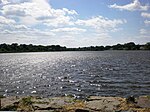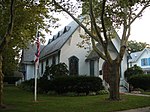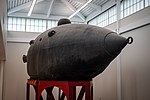Parker House (Sea Girt, New Jersey)
1880 establishments in New JerseyBuildings and structures completed in 1878Buildings and structures in Monmouth County, New JerseyDefunct hotels in New JerseyJersey Shore ... and 3 more
Sea Girt, New JerseyUse American English from October 2022Use mdy dates from October 2022

The Parker House was built c. 1878 in what is now Sea Girt, New Jersey. The 20,000 sq ft (1,900 m2) business establishment has been in operation since May 22, 1880, when it opened as a hotel with capacity for one hundred guests. The establishment gained a summer-season liquor license in 1935 and it remains in operation as a summer-season bar, restaurant, and nightclub.
Excerpt from the Wikipedia article Parker House (Sea Girt, New Jersey) (License: CC BY-SA 3.0, Authors, Images).Parker House (Sea Girt, New Jersey)
Beacon Boulevard,
Geographical coordinates (GPS) Address Nearby Places Show on map
Geographical coordinates (GPS)
| Latitude | Longitude |
|---|---|
| N 40.136388888889 ° | E -74.028888888889 ° |
Address
Beacon Boulevard 90
08750
New Jersey, United States
Open on Google Maps









